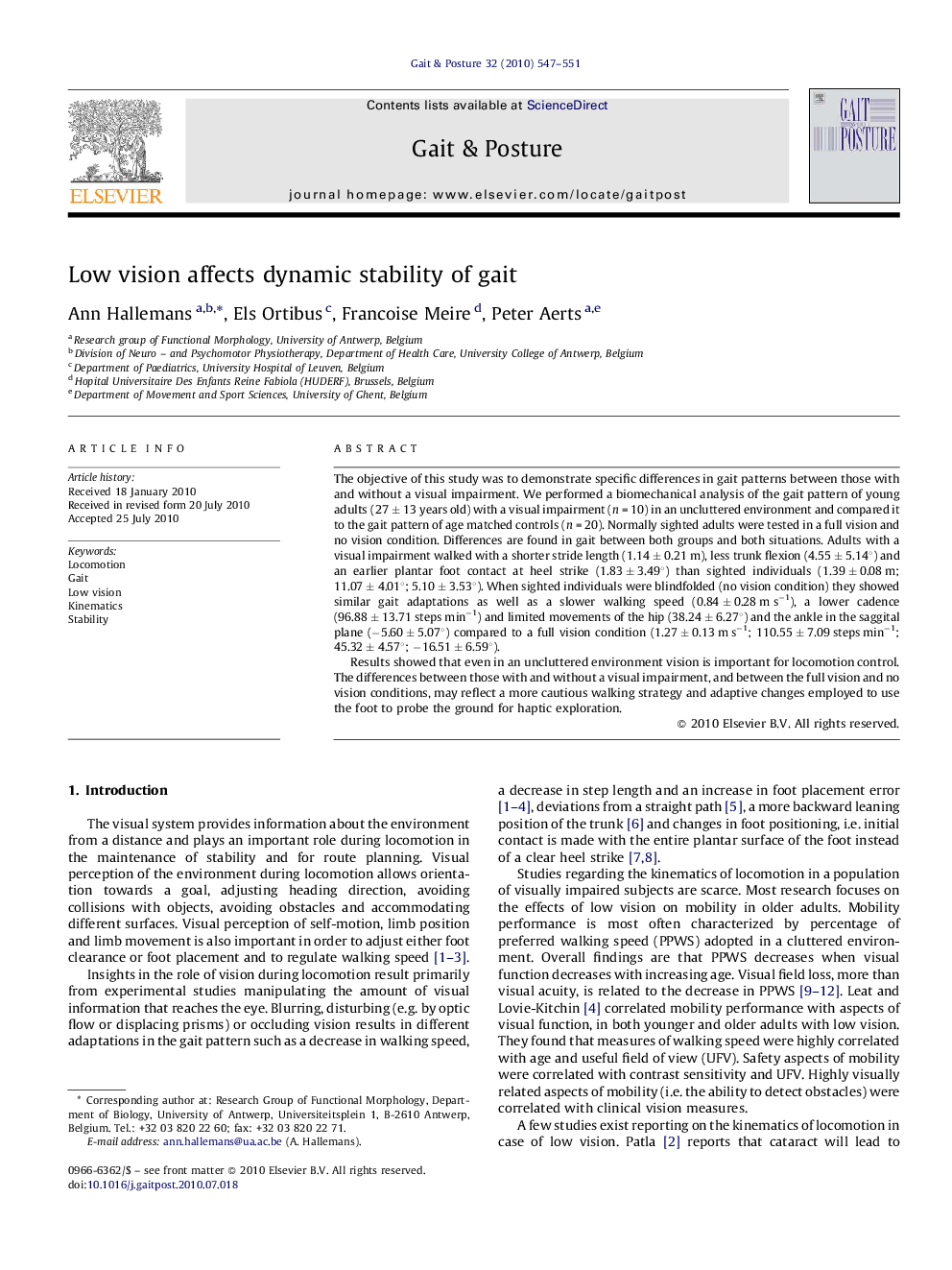| Article ID | Journal | Published Year | Pages | File Type |
|---|---|---|---|---|
| 4057011 | Gait & Posture | 2010 | 5 Pages |
The objective of this study was to demonstrate specific differences in gait patterns between those with and without a visual impairment. We performed a biomechanical analysis of the gait pattern of young adults (27 ± 13 years old) with a visual impairment (n = 10) in an uncluttered environment and compared it to the gait pattern of age matched controls (n = 20). Normally sighted adults were tested in a full vision and no vision condition. Differences are found in gait between both groups and both situations. Adults with a visual impairment walked with a shorter stride length (1.14 ± 0.21 m), less trunk flexion (4.55 ± 5.14°) and an earlier plantar foot contact at heel strike (1.83 ± 3.49°) than sighted individuals (1.39 ± 0.08 m; 11.07 ± 4.01°; 5.10 ± 3.53°). When sighted individuals were blindfolded (no vision condition) they showed similar gait adaptations as well as a slower walking speed (0.84 ± 0.28 m s−1), a lower cadence (96.88 ± 13.71 steps min−1) and limited movements of the hip (38.24 ± 6.27°) and the ankle in the saggital plane (−5.60 ± 5.07°) compared to a full vision condition (1.27 ± 0.13 m s−1; 110.55 ± 7.09 steps min−1; 45.32 ± 4.57°; −16.51 ± 6.59°).Results showed that even in an uncluttered environment vision is important for locomotion control. The differences between those with and without a visual impairment, and between the full vision and no vision conditions, may reflect a more cautious walking strategy and adaptive changes employed to use the foot to probe the ground for haptic exploration.
